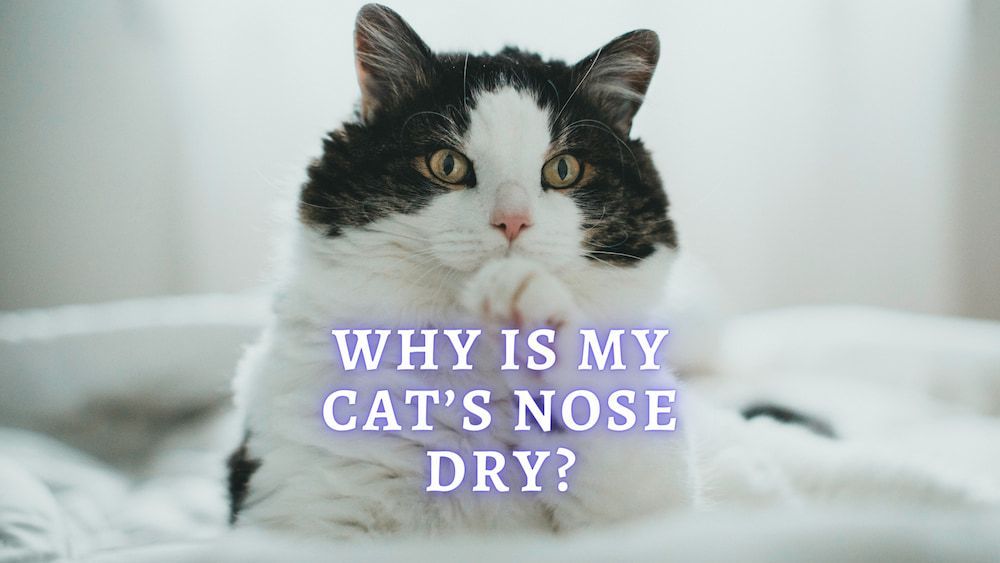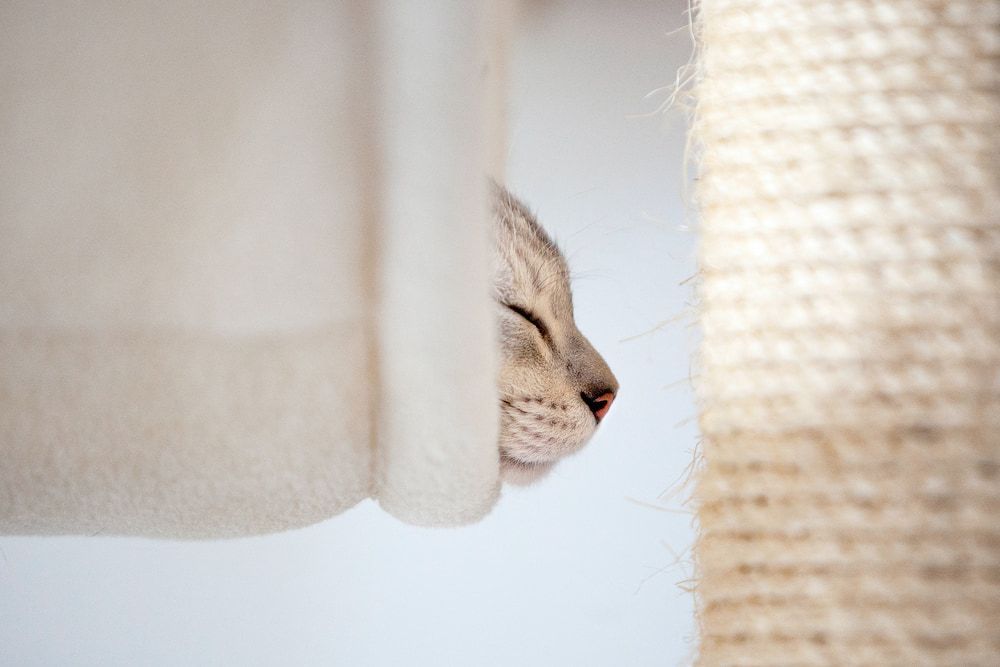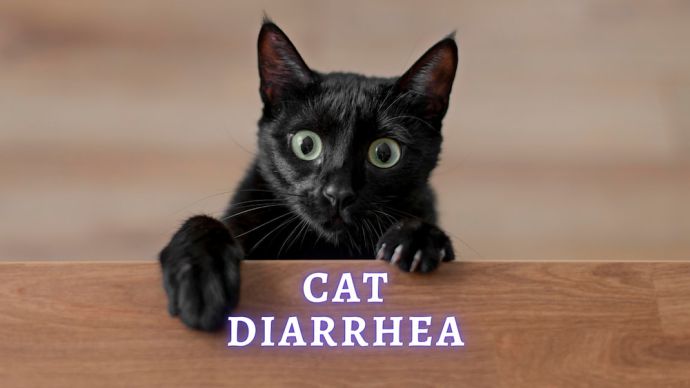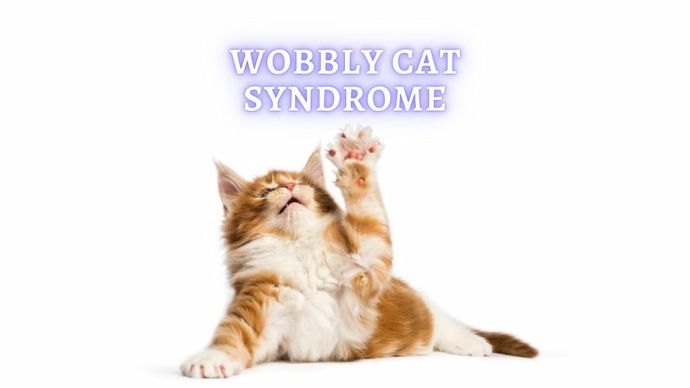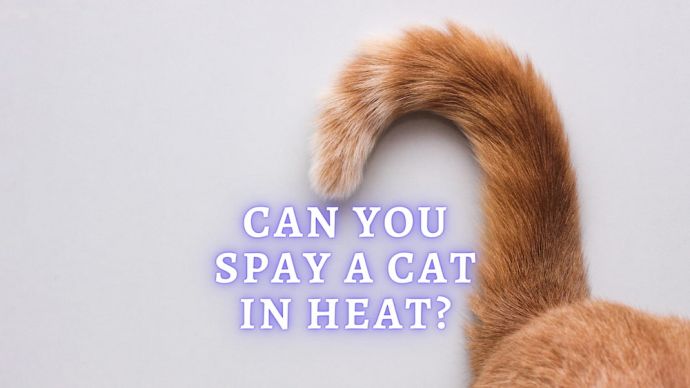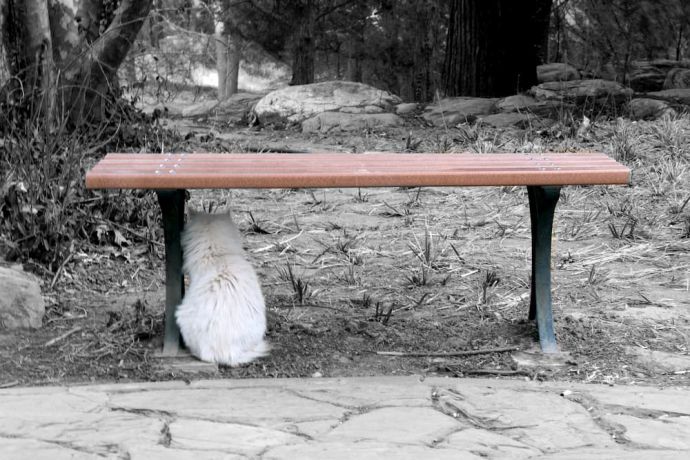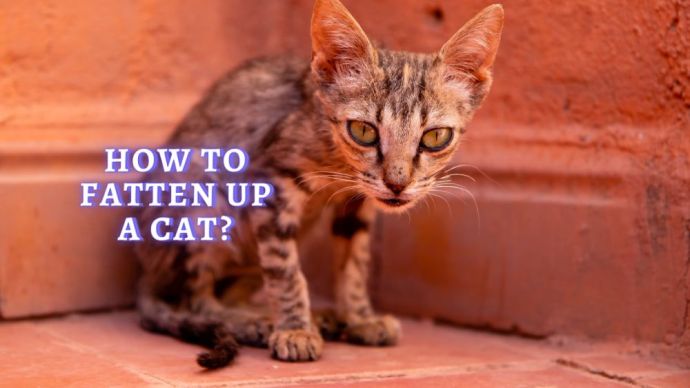Cat Dry Nose: Why is My Cat’s Nose Dry?
Written by:
Author: Vicki Smirnova
Vicki Smirnova is a professional writer and editor who adores animals and helps readers get along well with their pets. She has been working in digital media for more than 5 years and has great experience writing content about lifestyle, including pets. Vicki specializes in dog health and nutrition, cat feeding, dog training. She is an aquarium lover and is passionate to write about fish care at home. Also, Vicki headed several websites and worked as a news editor.
View all 244 articlesLearn about our editorial process and veterinary review board.
Reviewed by:
Veterinary review
by Dr. Sara Ochoa
Dr. Sara Redding Ochoa is a veterinarian with many years of experience and higher education. During her time in veterinary school she was able to learn form some of the most well-known veterinarians from all over the world. Sara lives happily with her husband Greg and her babies Ruby the schnoodle, and Bam-Bam her bunny. Dr. Sara Redding Ochoa has a passion and love for animals that makes her a wonderful asset to our team.
View all 13 articlesLearn about our veterinary review board
Viewed: 108
Updated on: 03/07/2023
The nose is one of the most critical indicators of an animal’s well-being. But it is necessary to correctly assess his condition because changes in temperature or humidity of the nose are not always the result of serious illnesses. Let’s see why cats have a dry nose and in what cases it may indicate the presence of diseases.
Should a Cat’s Nose Be Dry or Wet?
The nose of a healthy cat should be cool and moist; however, a dry and warm nose does not always signal something wrong with the animal. A cat’s nose can be dry during sleep, as well as after active games.
The lobe is the primary indicator of the well-being of the animal. In a healthy cat, the lobe is:
- cool;
- shiny;
- slightly damp;
- there are no scales or crusts on it.
Humidification of the nose occurs due to the secretion of the glands of the mucous membrane. It creates a barrier that provides protection against many negative factors, such as microorganisms and hazardous chemicals. Mucus also improves the function of olfactory sensors.
The main function of a cat’s nose is olfactory, which is one of the primary sense organs of the animal and contains 20 times more receptors than the human olfactory organs. Thanks to this, even blind newborn kittens can easily navigate in space, find their mother and respond to many other smells.
The sinuses of the nose are separated by a cartilaginous septum, which ensures the correct flow of air to the sniffing receptors. It is essential to consider that in brachycephalic breeds, the septum is often deformed, so their sense of smell is much weaker than other cats.
This body also performs other functions, in particular protective and tactile. It filters the air and removes dust and microbes, heating it to a comfortable temperature. The nose is the most tactile. With its help, the animal determines the temperature of food.
Why is My Cat’s Nose Dry?
Changes in the nose lobe’s temperature can occur due to a wide variety of processes. Many of them are not dangerous and should not cause alarm. If the animal’s activity and appetite remain at an average level, the reasons for a too-warm nose may be:
- high physical activity. This leads to increased blood flow and an increase in overall body temperature;
- prolonged sleep. During sleep, the work of all body systems slows down, including the mucous glands of the nose, which leads to the heating of its surface;
- low humidity and high temperature. Under such conditions, evaporation from the surface of the nose increases, and heat transfer generally slows down;
- lack of fluid. Even minimal dehydration can lead to nasal heating. It is necessary to ensure that the pet is always provided with enough water;
- stress. Being in a stressful state, the animal’s body releases many hormones, which leads to a decrease in the moistening of the nose and its heating.
Measuring the temperature of the nose does not always give accurate information about the cat’s body. For clarification, you can measure the temperature of his body with a rectal thermometer.
A Several pathological diseases are dangerous for the animal, one of the first manifestations of which is the heating of the lobe. It can be:
- tumor processes;
- trauma;
- rhinitis or sinusitis;
- helminthiases;
- poisoning;
- diseases of the genitourinary system.
If you suspect such pathologies, you should immediately contact your veterinarian. Remember that only a specialist can correctly assess the animal’s condition and make the correct diagnosis.[1]
When to Worry About a Cat’s Dry Nose
The nature of the changes in the cat’s body, which led to the nose becoming too warm or dry, can be guessed by several vital additional signs.
Loss of appetite
Refusal of food is often the result of a weakening of the body due to the development of inflammation, infections, or a deterioration in the functioning of internal organs. It is necessary to carefully analyze the animal’s behavior and measure the overall body temperature. If there are no signs of apathy and other pathologies, the most likely cause of the temperature change was a stressful situation. In this case, affection and increased attention to the pet will be enough to normalize the condition.
Hot ears
In combination with a too-warm nose, they indicate hyperthermia. It may occur when:
- infection with ear mites;
- colds;
- viral and bacterial infections;
- injuries.
Also, overheating of the cat’s body can occur after an extended stay in a hot room.
Nose color change
Such changes are almost always a cause for concern and reflect pathological processes in the body. If the nose has acquired a bluish tint, the animal develops intoxication, and the yellow color indicates kidney failure and unnatural pallor – about heart disease.
Painful symptoms
In the presence of such manifestations, the animal’s life is in danger and needs urgently qualified assistance. The most threatening are:
- vomiting and loose stools. Often occur with severe infections, poisoning;
- nasal discharge. Maybe mucous, purulent, mixed with blood;
- labored breathing. Often indicates serious damage to the lungs or heart.
If these symptoms occur, it is necessary to immediately deliver the animal to the veterinary clinic for first aid and detailed diagnosis.
RELATED: How to Tell If My Cat Is Sick?
Cat’s super wet nose
Although a cat’s nose should be hydrated, the presence of excess secretions may indicate the presence of various pathological processes. These include:
- Cold. A profuse runny nose and frequent sneezing do not allow moisture to evaporate from the surface of the nose.
- Tumors and foreign objects. In response to an obstacle inside the nasal passages, the animal’s body begins to secrete an increased amount of mucus.
- Allergic reactions. The symptoms are identical to the common cold but quickly pass in the absence of contact with the allergen.
- Hypothermia and poisoning. Accompanied by a general decrease in body temperature.
- Heart diseases. Accompanied not only by a large amount of mucous secretions but also by the pallor of the nose.
There are many other reasons for the increase in the humidity of this organ. Only a specialist can understand them in detail. It is important to remember that self-medication is unacceptable; it can cause serious harm to the pet. [2]
What Else Should I Look for if My Cat Has a Dry Nose?
Self-examination of the animal is not a problem. The main thing is to pay increased attention to measuring the nose’s temperature and humidity and studying the mucous membranes’ color. It is better to write down the examination results, along with other identified symptoms, in the future; these records will help the specialist make the correct diagnosis.
Measuring a cat’s heart rate
Difficulty can arise with measuring the pulse. For its probing, the femoral artery is best suited. To detect it, you need:
- lightly press with your fingers in the area of the artery on the inner surface of the limb;
- having found the beating of the vessel wall, you need to detect 10 seconds on the stopwatch and count the number of shocks for this period;
- the data obtained is multiplied by 6, so the number of heartbeats per minute is obtained;
- a normal heart rate is 120 to 140 bpm. It should be borne in mind that it will be more frequent in kittens, and in large breeds, it will be rare.
Temperature measurement
One of the most critical indicators of a cat’s health is its body temperature. It can be easily measured independently; the rectal measurement method obtains the most accurate result.
For it, you can even use an ordinary thermometer, only the measurement time depends on the type of device:
- 6 minutes. How much you need to measure the temperature when using a mercury thermometer;
- 3 minutes. This time is sufficient when using an electronic thermometer;
- 10 Seconds. After such a period, a special rectal thermometer gives the result.
The procedure is not particularly difficult, but requires preparation and calming the animal. Before inserting a thermometer into the rectum, its tip must be lubricated with petroleum jelly. The animal will need to be securely fixed (for example, wrapped in a towel). You can not enter the thermometer to a depth of more than 2.5 cm. The normal body temperature of a cat is 38-39 degrees.
After receiving the result, the device must be thoroughly disinfected and returned to the first-aid kit. Especially carefully, you need to handle mercury thermometers, as damage to them can lead to the spread of mercury around the house, the vapors of which are extremely toxic.
Treatment Options for Cat Dry Nose
If an increase in nasal temperature is accompanied by general hyperthermia, you can try to lower the pet’s body temperature on your own. To do this, apply cool compresses to the armpits or moisten the animal’s hair.
It is important to prevent the development of dehydration, as the body of a cat during an increase in body temperature requires large amounts of fluid. Even if the animal refuses the liquid, it can be drunk through a pipette or syringe.
Crusts or peeling that appear on the lobe can be removed with a solution of furacilin. In cases where these actions have not given effect, only a qualified veterinarian will help.
It is important to remember that cats are strictly forbidden to give antipyretic drugs without a doctor’s prescription. Many of them are toxic and can cause severe poisoning or intolerance reactions. Therefore, any pharmacological agents are given to the animal only after a veterinary examination and an accurate diagnosis.
There is no need to panic if you find that your pet’s nose is too wet or dry. If the condition is not accompanied by other disorders, it is highly likely to resolve on its own within 1-2 days. If this does not happen, you should visit a veterinarian.
How to Care for Your Cat’s Nose
To ensure that your cat’s nose is always normal, and she herself feels healthy and alert, follow the following preventive measures:
- Keep your pet out of the sun for too long, as well as in hot, poorly ventilated areas and near heat sources. Otherwise, the animal runs the risk of overheating and getting heatstroke, and this is dangerous to health;
- Ventilate the house regularly, and maintain optimal temperature and humidity. Too dry air is harmful to cats, as is excessive heat – it can cause problems with the skin or respiratory organs;
- Make sure your cat always has access to clean drinking water. It is better to have several drinkers in different places;
- Don’t overfeed your pet. Excess food can lead to a variety of health problems for the animal. Establish a consistent regimen and use only quality, balanced Purina ONE cat foods. The veterinarian will help you calculate the nutritional rate, or follow the instructions on the food packages;
- Follow the vaccination schedule and regularly (at least once every 3 months) treat for parasites (both internal and external);
- At least once a year, undergo a complete medical examination at a veterinary clinic. This will help to identify possible health problems in the early stages and successfully deal with them.
As you can see, both a dry and wet nose can be normal for a cat. It all depends on the state in which the animal is located and its environment. And only from an attentive and loving owner will not hide a single circumstance that indicates that his pet needs help.
People also ask:
What does it mean if your cat’s nose is dry?
Changes in the temperature of the nose can occur as a result of a wide variety of processes. Many of them are not dangerous and should not cause alarm. However, a number of diseases are dangerous for the animal, one of the first manifestations of which is the heating of the lobe. It can be tumor processes, trauma, rhinitis or sinusitis, poisoning, and more.
How do you fix a dry nose on a cat?
In most cases, the cat’s body can cope with the disease on its own; the owner only needs to alleviate the symptoms – wipe the coat with a damp cloth, clean the outer part of the nose from secretions, and provide access to fresh drink. If the symptom does not disappear within 1-2 days, it is worth making an appointment with a veterinarian.
Article Sources:
- “Is Your Cat Sick? Try This at-Home Exam.” The Humane Society of the United States, humanesociety.org/resources/your-cat-sick-try-home-exam.
- Reighard, Jacob, and H. S. Jennings. “Anatomy of the Cat.” Biodiversity Heritage Library, https://www.biodiversitylibrary.org/item/114571#page/7/mode/1up
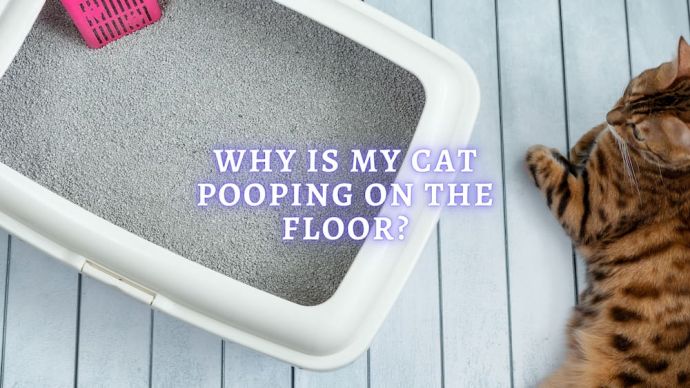 Cat Care Why Is My Cat Pooping on the Floor? How to Stop Cat From Pooping Outside the Litter Box
Cat Care Why Is My Cat Pooping on the Floor? How to Stop Cat From Pooping Outside the Litter Box - 370
- 0
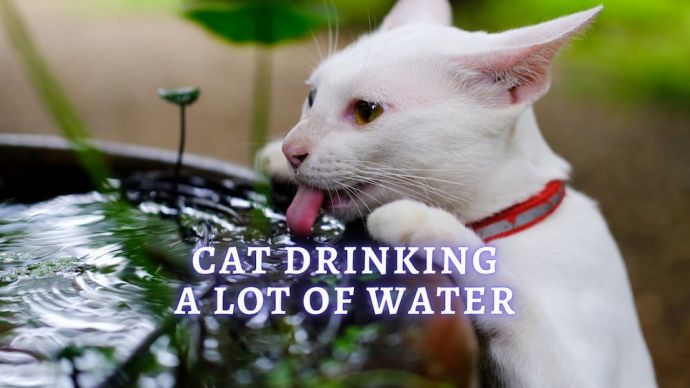 Cat Care Cat Drinking a Lot of Water: Health and Behavior Reasons Why Your Cat Drinks So Much
Cat Care Cat Drinking a Lot of Water: Health and Behavior Reasons Why Your Cat Drinks So Much - 430
- 0
 Cat Care Why Does My Cat Attack My Legs? 10 Reasons Why and What To Do About It (Vet-Approved Advice)
Cat Care Why Does My Cat Attack My Legs? 10 Reasons Why and What To Do About It (Vet-Approved Advice) - 46013
- 21
 Cat Veterinary Tips Cat Stomach Gurgling: Vet Advice on Why is Your Cat Stomach Gurgling?
Cat Veterinary Tips Cat Stomach Gurgling: Vet Advice on Why is Your Cat Stomach Gurgling? - 36469
- 4
 Cat Veterinary Tips My Cat Lost its Voice: Can Cats get Laryngitis? (Vet Advice)
Cat Veterinary Tips My Cat Lost its Voice: Can Cats get Laryngitis? (Vet Advice) - 23554
- 13









